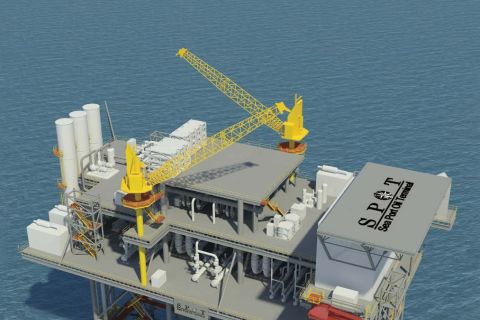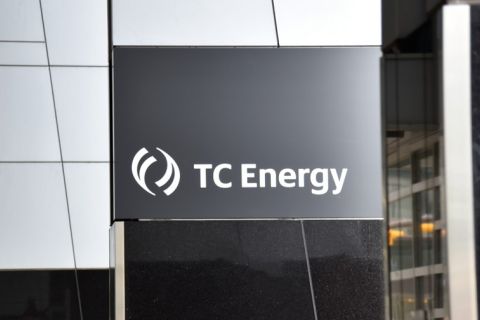
(Source: HartEnergy.com; kkssr, Ververidis Vasilis/Shutterstock.com)
If this pandemic is, as Indian writer Arundhati Roy suggests, “a portal, a gateway between one world and the next,” does the energy transition for midstream qualify as a logical extension of the metaphor? Winona LaDuke thinks so.
“I’m looking at this decline in production and that we’re all operating remotely, that Google is the biggest guy in the world along with Amazon,” the environmental activist said during the recent Reuters Future of Oil & Gas 2020 online conference, referring to leading public companies based on market capitalization. “Exxon’s not there anymore, right? So, these transitions happen and the question is: with disruptive technologies and disruptive times, how are we all going to adapt?”
LaDuke heads Honor the Earth, a Minnesota non-profit focused on raising awareness and financial support for indigenous environmental justice. Much of her time is spent fighting Enbridge Inc.’s Line 3 replacement project as well as the Canadian company’s other operations. And while her crusade is to move the world away from fossil fuels and the pipelines dedicated to transporting them, at least some of the points she makes find agreement in the oil and gas industry.
“I honestly look at any sort of market disruption, and the market disruption that happened here was that, even pre-COVID you saw an expansion of oil and gas,” Justin Carlson, co-founder and chief strategy officer of East Daley Capital, said during the conference. “You saw an excess amount of supply hit the market and therefore we had a collapse in prices. And that was pre-COVID. Then you stack on COVID, you have even less demand.”
How the new normal supply/demand balance will shake out is unclear. The overall demand response may depend on whether people continue to work from home, which also would require a closer look at supply.
“Any time you have a market cycle like this, you have an opportunity for companies to shift the way that they’re making their investments and shift the way they think about the future,” he said. “They may not be as married to the old way that they operated because they have to make a shift, and they make a shift or they go under.”
The U.S. Energy Information Administration (EIA) forecasts global energy consumption to grow by 50% between now and 2050. Carlson expects natural gas to meet a lot of that higher demand but not all of it. He sees renewables as primed to step in, as well.
Swelling global population and economic expansion in emerging nations will drive this demand and weigh on the system, Carlson said.
LaDuke isn’t so sure.
“I do see the rise in energy consumption, but those predictions, a lot of them, were before COVID,” she said. “I believe that there’s going to be a transformation of workplaces and that normal that we had before won’t be the same after COVID.”
What is Needed
Midstream entered 2020 fresh off its largest capital development year ever: $37 billion. The sector had mounted a ferocious effort to match infrastructure with burgeoning supply. Capex cycles start with production growth, Carlson said, followed by infrastructure development to meet it, or a constraint of infrastructure leading to price spreads, which creates the need for more infrastructure. And so, the cycle goes. Or it did.
“We’re now out of that cycle,” he said. “We don’t need as much infrastructure. We’ve done the development we need and now companies can focus their attention elsewhere, midstream companies in particular.”
Focusing elsewhere might include turning away from that poster child of incomplete projects, TC Energy Corp.’s Keystone XL pipeline.
“We’ve been relatively skeptical about even the need for Keystone XL as a whole for a long time, despite the long-term support,” Carlson said. So skeptical, in fact, that East Daley hasn’t included the project in its forecast models because it didn’t make sense financially. Analysts doubted it would ever be built, and that was well before Biden won the election.
“Certainly the Biden administration is going to come in with its own set of policies, but quite frankly, the capital markets have done quite a bit towards furthering what would be considered Biden’s initiatives, anyway,” he said. “They’ve already rectified some of the excess supply.”
Midstream’s Wheelhouse
The incoming administration’s plan to accelerate the energy transition fits into what midstream companies do.
“At the end of the day, they are logistics companies,” Carlson said. “They’re solving a supply/demand issue.” That positions the sector to tackle whatever problems that an energy transition will present, including legal and regulatory issues, land use issues and just plain moving or storing stuff, be it natural gas, crude oil or hydrogen.
Almost like a shale revolution with less shale.
“There is not a strategy team in any midstream company that I know of that is not talking about what role they play in the future,” he said. “What they’re about is just trying to run efficient businesses. They’re trying to create jobs for people and to the extent that they have the opportunity to play a role in an energy transition, they’re going to step up to the plate.”
As Roy wrote, it’s a matter of choice. The industry, and the midstream in particular, can choose to walk through the pandemic/energy transition portal “dragging the carcasses of … dead rivers and smoky skies behind us. Or we can walk through lightly, with little luggage, ready to imagine another world. And ready to fight for it.”
Recommended Reading
Enterprise Gains Deepwater Port License for SPOT Offshore Texas
2024-04-09 - Enterprise Products Partners’ Sea Port Oil Terminal is located approximately 30 nautical miles off Brazoria County, Texas, in 115 ft of water and is capable of loading 2 MMbbl/d of crude oil.
TC Energy's Keystone Oil Pipeline Offline Due to Operational Issues, Sources Say
2024-03-07 - TC Energy's Keystone oil pipeline is offline due to operational issues, cutting off a major conduit of Canadian oil to the U.S.
TC Energy’s Keystone Back Online After Temporary Service Halt
2024-03-10 - As Canada’s pipeline network runs full, producers are anxious for the Trans Mountain Expansion to come online.
Enbridge Fortifies Dominant Role in Corpus Christi Crude Transport
2024-03-20 - Colin Gruending, Enbridge executive vice president and president for liquids pipelines told Hart Energy the company’s holdings in South Texas are akin to a “catcher’s mitt” for Permian and Haynesville production.
Early Startup of Trans Mountain Pipeline Expansion Surprises Analysts
2024-04-04 - Analysts had expected the Trans Mountain Pipeline expansion to commence operations in June but the company said the system will begin shipping crude on May 1.




